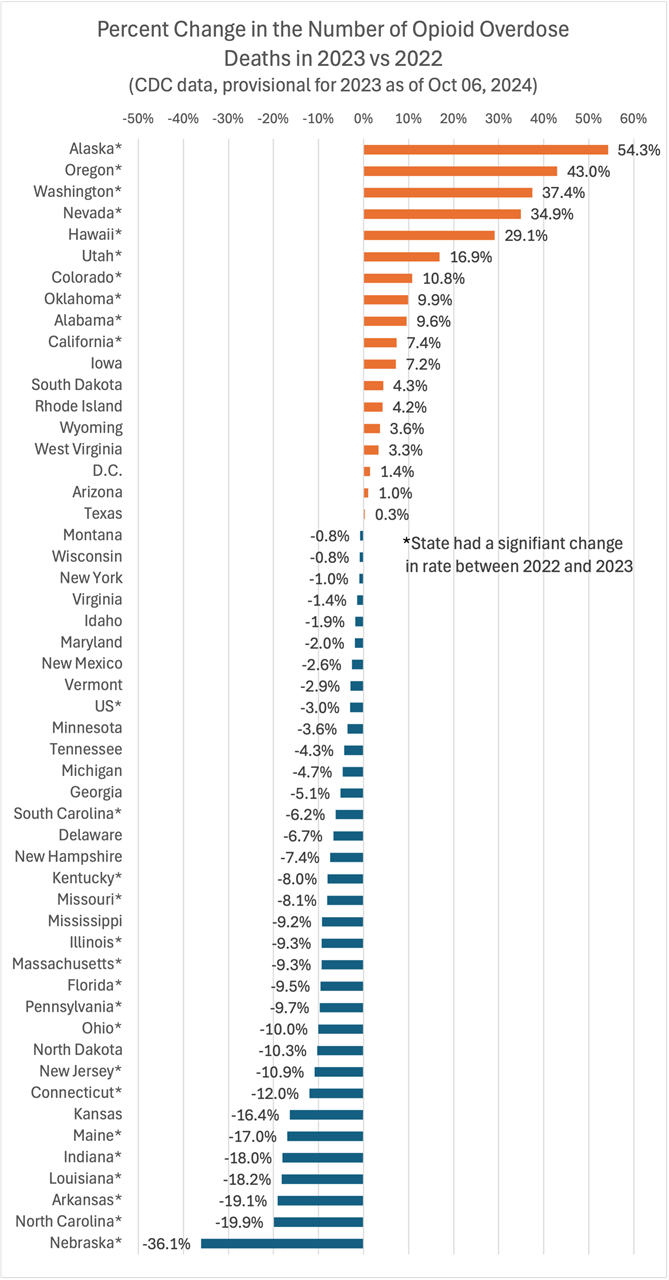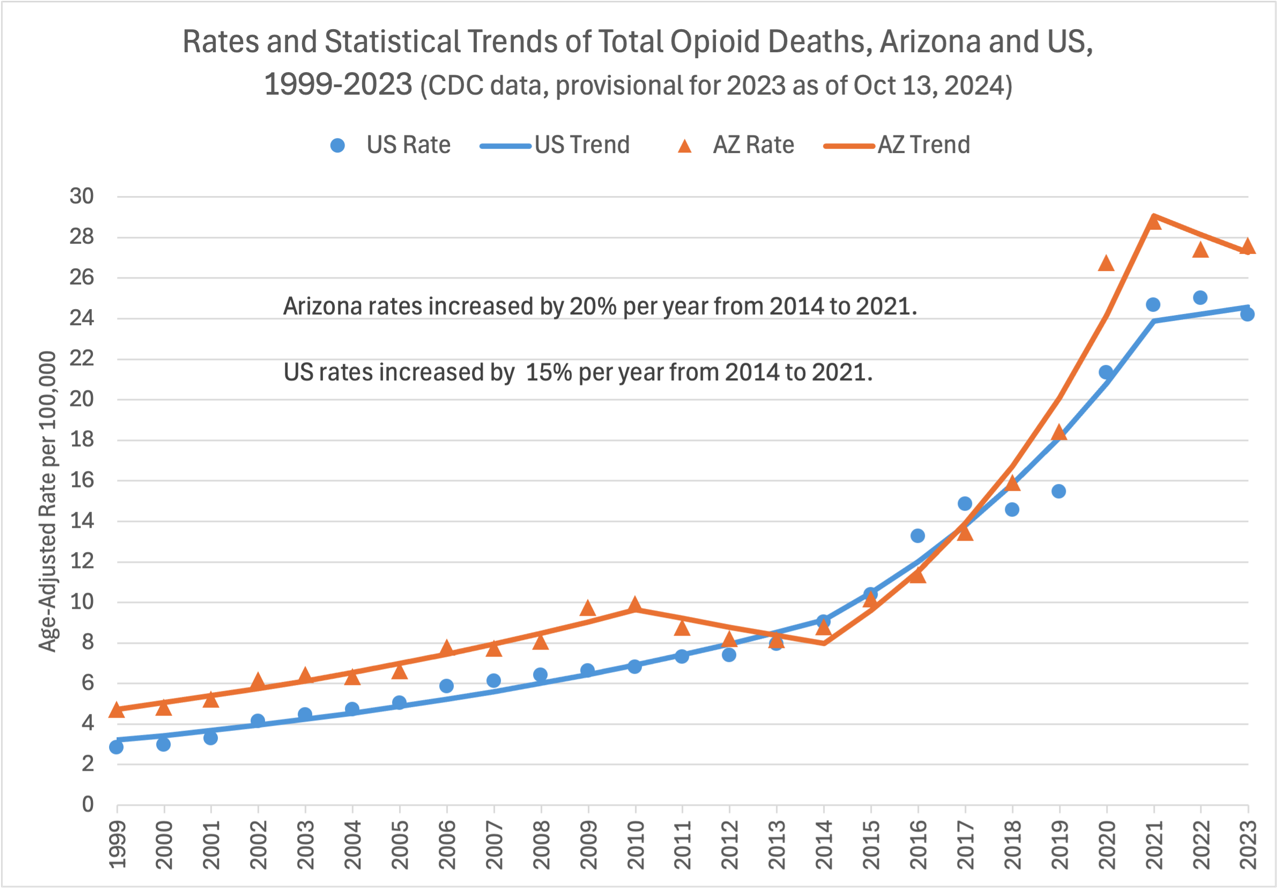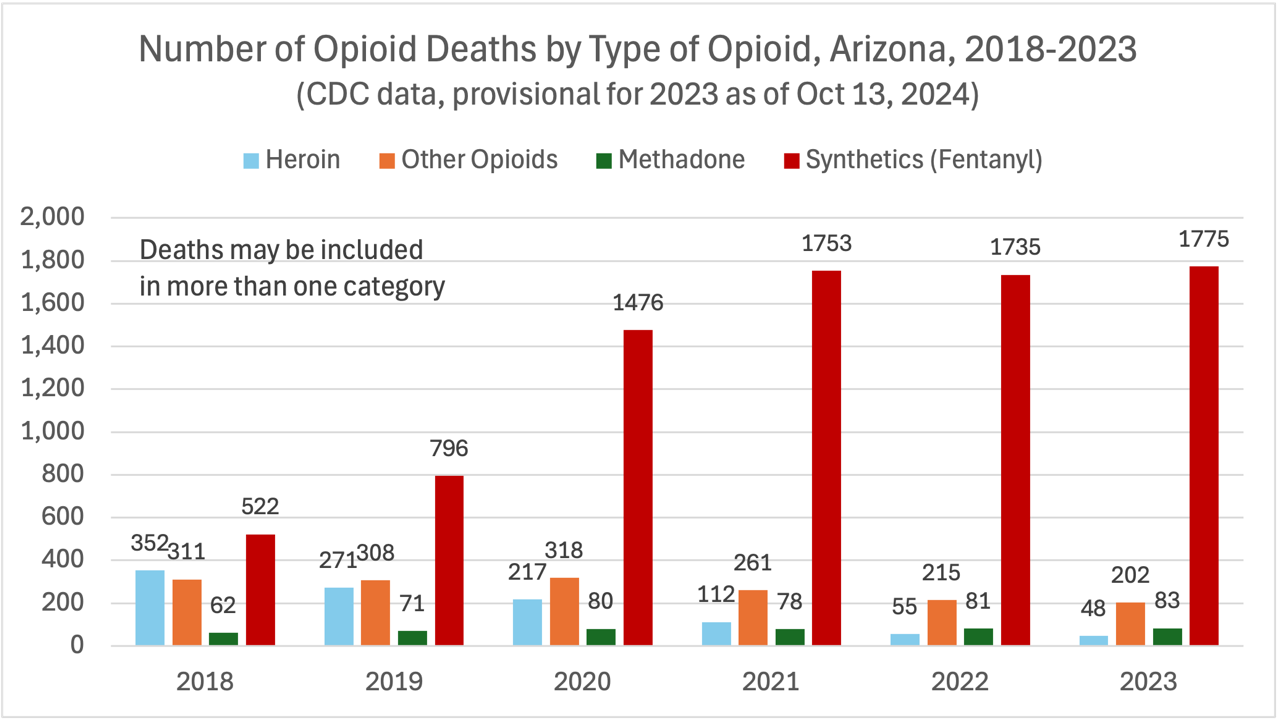|
|
|
|
|
|
|
Over the past year, the U.S. has seen a significant decrease in opioid overdose deaths, including those involving fentanyl. After years of rising fatalities, this decline is promising and suggests that several key strategies are working together to reverse the trend. Interestingly, there hasn’t been an across-the-board reduction in opioid deaths. Some states have done quite well in the last couple of years. For example, Nebraska has reduced opioid deaths by a remarkable 36%. Other states have seen big increases like Alaska with a 54% increase. As you take a look at the charts above (courtesy AZPHA member and epidemiologist Allan Williams, PhD) you’ll see that Eastern and Midwestern states have been doing better than the western states. Arizona remained about the same – with a 1% increase in opioid deaths over the last couple of years. One major factor for improvements in some states has been the wider distribution of naloxone (Narcan), the overdose-reversing drug. Communities across the country have increased access to naloxone by making it available without a prescription and training the public in its use. This life-saving medication, when administered promptly, can reverse an opioid overdose, preventing deaths – but only if it’s in the right place at the right time – with first responders and bystanders. KFF Health NewsAnother factor contributing to the decline is the expansion of harm reduction programs. These include needle exchange programs, safe consumption sites, and medication-assisted treatment using drugs like buprenorphine and methadone. States that have adopted these measures have seen significant reductions in opioid-related fatalities. By focusing on keeping individuals safe and engaged with recovery services, these programs are proving effective at curbing overdose deaths. A new influx of opioid settlement dollars could be playing a key role in the reduction. In recent years, pharmaceutical companies involved in the opioid crisis have had to pay billions in settlements to states and local governments. These funds are being used to improve addiction treatment programs, enhance public health interventions, and expand harm reduction efforts. In many communities, this funding has led to better prevention, treatment, and recovery support. What’s Up with All that Opioid Settlement Money & How Come There’s No State Plan for It Yet?More Opioid Settlement Money on the WayFinally, state-level interventions and improved fentanyl monitoring have helped reduce fatalities in regions hardest hit by the opioid crisis. States like Vermont and North Carolina have seen overdose deaths decline by as much as 30%, thanks to coordinated efforts that combine law enforcement, public health, and community engagement. Opioid crisis: Fall in US overdose deaths leaves experts scrambling for an explanation | BMJIt would be fascinating to do a crosswalk between the results among the states in terms of opioid death rates and the way their states and communities have been using their opioid settlement dollars. After all – a key tenant of public health practice is to make sure you measure and publish the results of your interventions so you can both measure your own performance and help others learn from you too. Sadly, I couldn’t find a journal article that dives into the detail of how states are using their money and the trends that they’re seeing in the field. Sounds like a good practical project for an enterprising graduate student or professor of public health!
|



